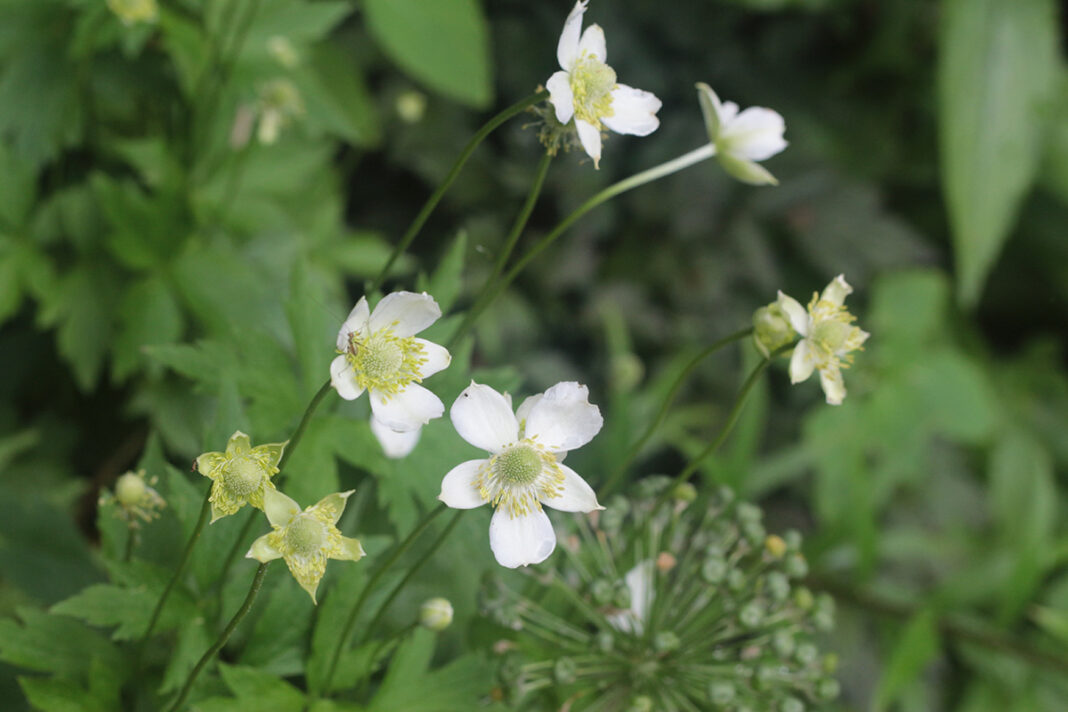15 Favorites: Native White Flowers for a Garden that Glows
White flowers are elegant and versatile additions to any garden, providing a sense of purity and tranquility. When choosing native white flowers for your garden, not only do you benefit from their beauty, but also from their adaptability to your local climate and soil conditions. Here are 15 favorite native white flowers that can make your garden glow:
1. White Trillium (Trillium grandiflorum)
White trillium is a native wildflower known for its three-petaled blooms that light up shady woodland gardens. It thrives in moist, well-drained soil and blooms in early spring, attracting pollinators like bees and butterflies.
2. White Bleeding Heart (Dicentra spectabilis alba)
This graceful perennial with heart-shaped white flowers adds a touch of romance to a shady garden. It prefers rich, moist soil and blooms in late spring to early summer, attracting hummingbirds with its nectar-filled blooms.
3. White Coneflower (Echinacea purpurea ‚White Swan‘)
A white variety of the popular purple coneflower, this native plant is a staple in pollinator gardens. It thrives in full sun and well-drained soil, blooming from midsummer to early fall and providing a food source for butterflies and bees.
4. White Wood Aster (Eurybia divaricata)
This delicate native aster brightens up shade gardens with its daisy-like white flowers that bloom in late summer to early fall. It prefers moist, well-drained soil and attracts butterflies with its nectar-rich blooms.
5. Foamflower (Tiarella cordifolia)
Featuring airy white flower spikes and heart-shaped leaves, foamflower is a charming ground cover for woodland gardens. It thrives in partial shade and moist, well-drained soil, blooming in spring and attracting bees and butterflies.
6. White Turtlehead (Chelone glabra)
This native perennial gets its name from its unique white flowers that resemble a turtle’s head. It grows well in moist to wet soil and blooms in late summer to early fall, attracting bees and butterflies to its nectar-filled blooms.
7. Indian Pipe (Monotropa uniflora)
Also known as the ghost plant, Indian pipe is a unique native wildflower that lacks chlorophyll and grows in shady, moist forests. Its white, ghostly flowers appear in summer and attract bees and flies with their sweet scent.
8. Wild White Indigo (Baptisia alba)
This tall, stately plant with white pea-like flowers adds a vertical element to meadow gardens. It thrives in full sun and well-drained soil, blooming in late spring to early summer and attracting bees and butterflies to its nectar-rich blooms.
9. White Joe-Pye Weed (Eutrochium dubium)
A favorite of pollinators, white Joe-Pye weed is a native perennial with fluffy white flower clusters that bloom in late summer to early fall. It thrives in moist to wet soil and attracts butterflies and bees with its abundant nectar.
10. Fragrant White Water Lily (Nymphaea odorata)
This exquisite native water lily floats on the surface of ponds and adds a touch of elegance with its fragrant white flowers. It prefers still, shallow water and blooms from late spring to early fall, attracting bees and other pollinators.
11. White Bergamot (Monarda fistulosa ‚Alba‘)
This native bee balm variety features white, tubular flowers that bloom in summer and attract a variety of pollinators. It thrives in full sun to partial shade and well-drained soil, adding architectural interest to cottage gardens.
12. White Fringed Orchid (Platanthera blephariglottis)
This native orchid graces wet meadows and bogs with its delicate white flowers that have fringed lips. It thrives in moist to wet soil and blooms in late spring to early summer, attracting butterflies and moths with its floral display.
13. White Meadowsweet (Spiraea alba)
This native shrub with white flower clusters brightens up wet to moist areas in the landscape. It blooms in mid to late summer, attracting bees and butterflies with its nectar-rich blooms. It also provides food and habitat for wildlife.
14. White Goldenrod (Solidago bicolor)
This showy native perennial features white flower clusters that brighten up late summer and fall gardens. It thrives in full sun and well-drained soil, attracting bees, butterflies, and other pollinators with its abundant nectar.
15. White Gentian (Gentiana andrewsii)
This striking native wildflower with trumpet-shaped white flowers adds a pop of color to late summer and fall gardens. It prefers moist to wet soil and attracts bees and butterflies with its nectar-rich blooms. It is a favorite of native plant enthusiasts.
Conclusion
Adding native white flowers to your garden can create a serene and inviting atmosphere while supporting local wildlife. These 15 favorites offer a range of sizes, shapes, and bloom times to suit any garden style. Whether you have a sunny meadow or a shady woodland, there is a native white flower that will make your garden glow.
FAQs
Q: Are native white flowers easy to grow?
A: Native white flowers are typically easy to grow once you provide them with the right growing conditions, such as sunlight, soil type, and moisture levels. Choosing native plants that are well-suited to your local climate and soil will increase their chances of success in your garden.
Q: How can I attract pollinators to my garden with native white flowers?
A: Native white flowers provide a valuable food source for bees, butterflies, and other pollinators. To attract these beneficial insects to your garden, plant a variety of native white flowers that bloom at different times of the year and provide nectar-rich blooms for pollinators to feed on.
Q: Can I mix native white flowers with other colors in my garden?
A: Yes, native white flowers can be mixed with other colors to create a vibrant and diverse garden palette. Consider combining white blooms with shades of pink, purple, blue, or yellow for a visually stunning effect that will attract a variety of pollinators to your garden.




